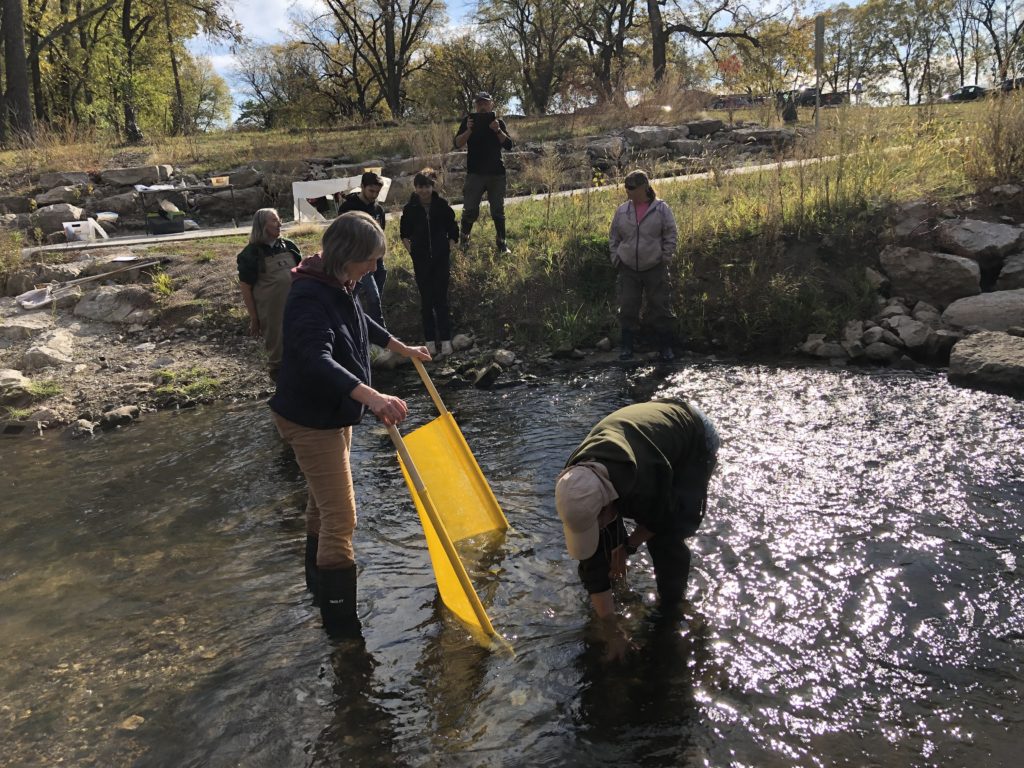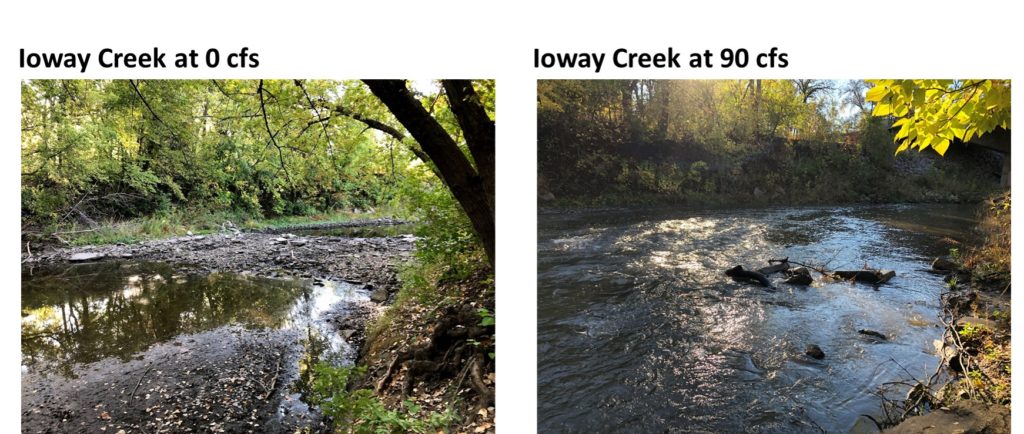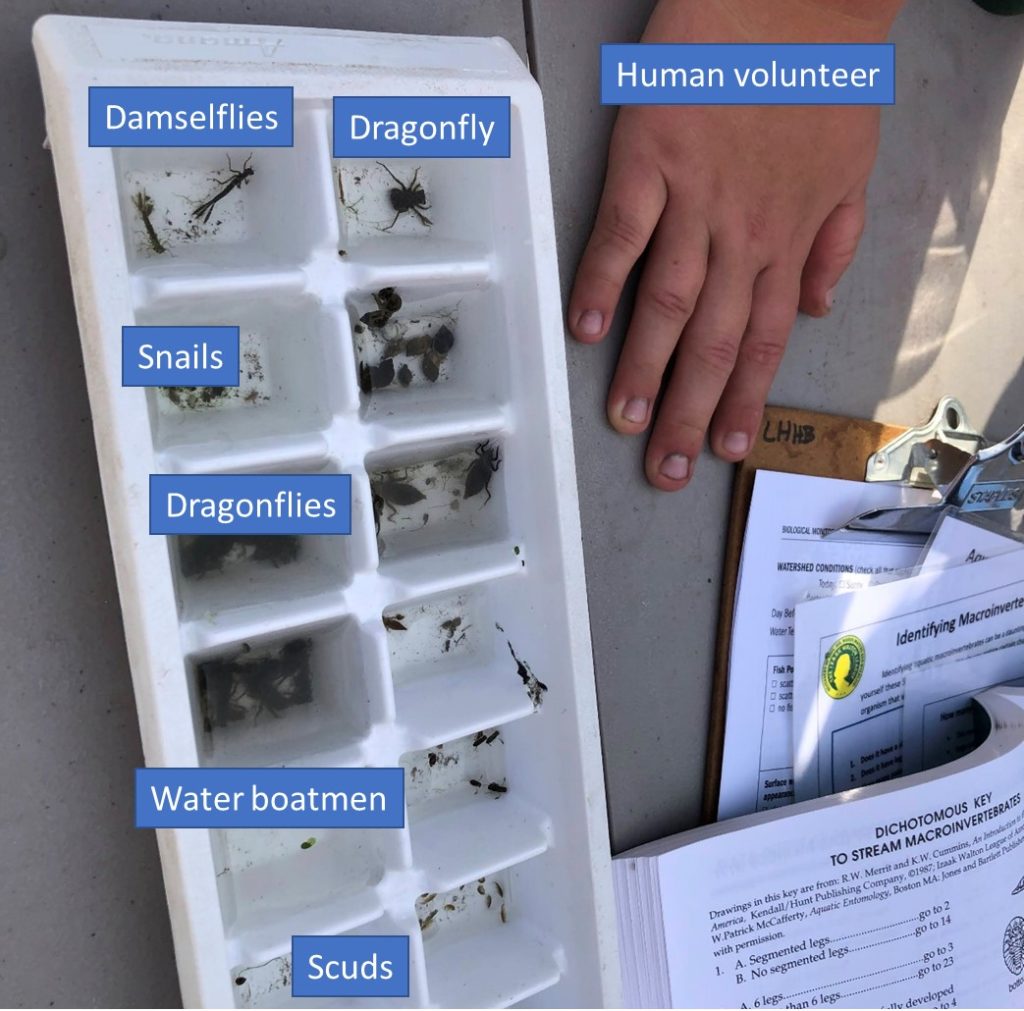Thanks to the 15 volunteers who helped to catch benthic macroinvertebrates (bugs) and test water quality over the weekend!

Ioway Creek “Snapshots” in May and October are a tradition going back to 2006. Volunteers test water quality at many locations on the same day to get a better picture of what’s going on in the watershed. Since the IOWATER program ended, Prairie Rivers of Iowa has gathered supplies and planned events to keep the tradition going, but this year there was just one little snag: there was barely any water in Ioway Creek or its tributaries!

Not a problem. The South Skunk River still had flowing water, and this was as good an opportunity as any to survey benthic macroinvertebrates (aquatic bugs), an indicator of water quality and habitat quality in rivers. We were helped in this task by Susan Heathcote, a trainer with the Izaak Walton League’s Save Our Streams program. If you’d like to become certified and missed out on this opportunity to complete the field portion of your training, keep an eye out for more training events with Susan in early spring.

In addition to crawfish and dragonflies (always a hit with kids), we found a variety of smaller critters, including sensitive mayflies and stoneflies. Overall, the invertebrate community in the South Skunk River was “good.” In contrast, another stream we surveyed this week (West Indian Creek south of Nevada) had a “poor” score with mostly net-spinning caddisflies. We’ll discuss some possible reasons for this difference at a webinar on November 2nd.

Another option for when streams are dry is to spend some time interpreting the data we have. Following some water quality testing in the Skunk River, I gave a presentation to put those measurements into context. I think the data feels more relevant when you’re at the water’s edge and have just gone through the process of collecting it! If you prefer to do your learning somewhere warm and comfortable, we’ll be covering similar information at a webinar on November 2nd.

Another hitch. Thunderstorms were forecast for Sunday! We changed the date to Saturday and are glad we did; the weather was beautiful. This also gave us the opportunity to set up equipment so we could capture water samples from the big rain on Sunday. Three volunteers helped me retrieve a dozen samples on Monday. The samples will be tested for E. coli bacteria and optical brighteners, which may help us find and fix septic and sewer leaks.

Many thanks to all who participated. We hope to see you at the next watershed snapshot in May, and hope the water levels will be back to normal!
